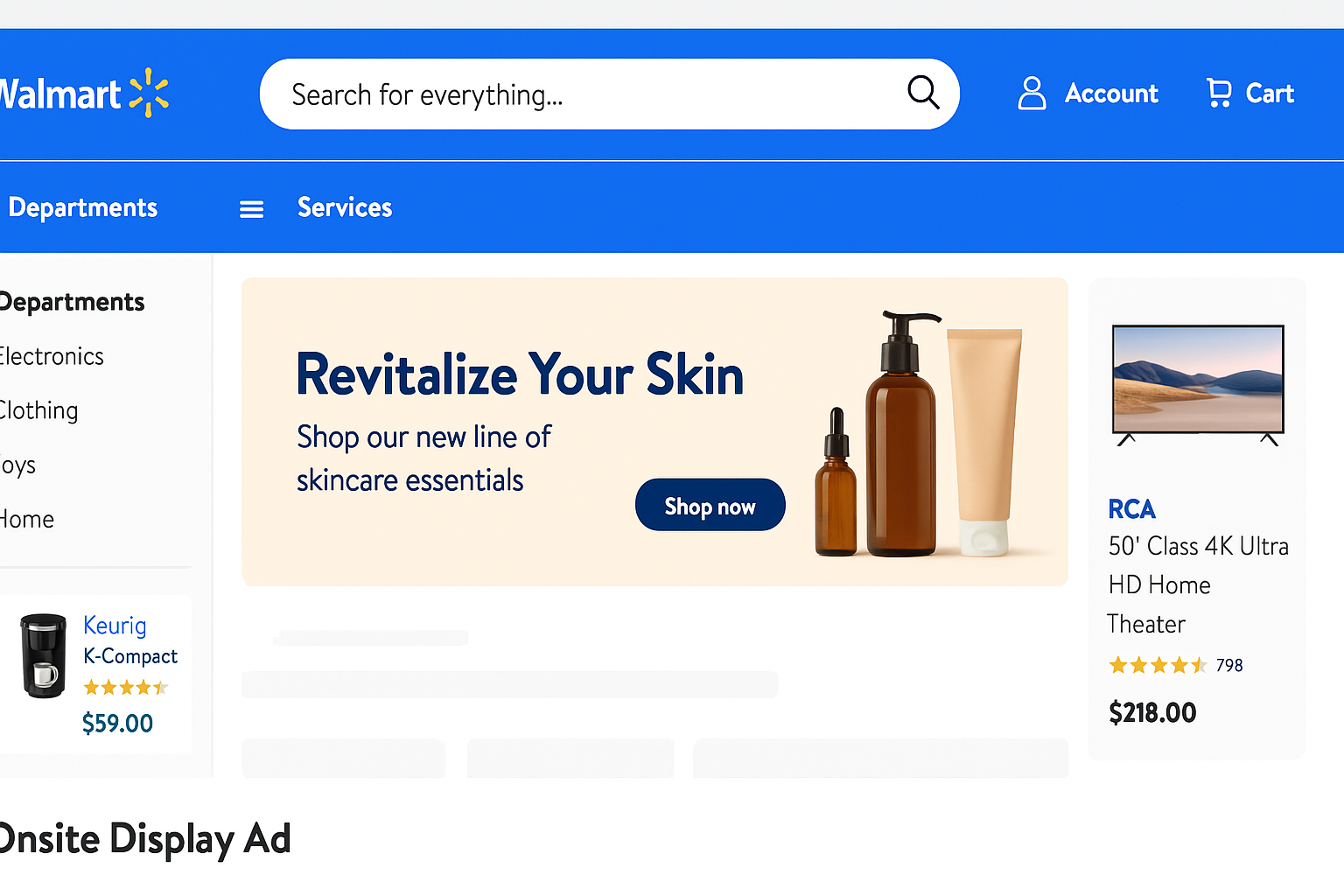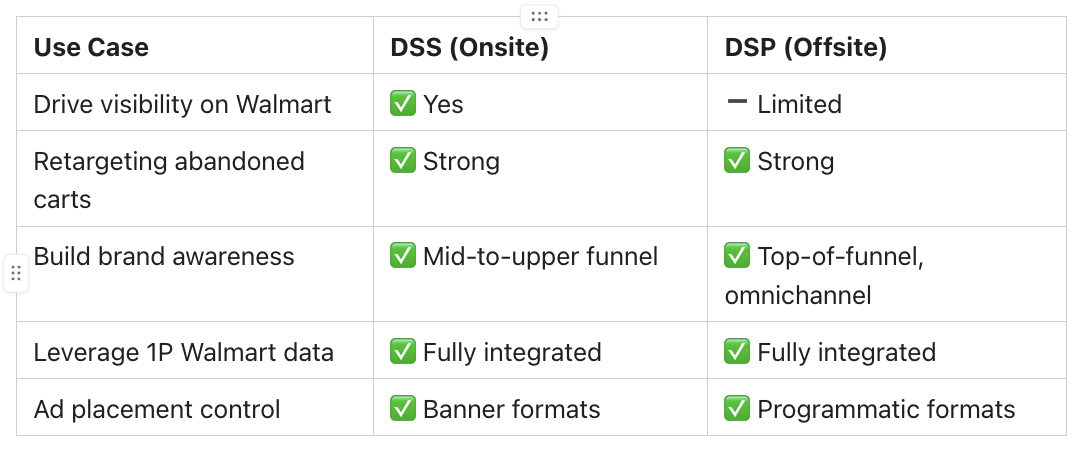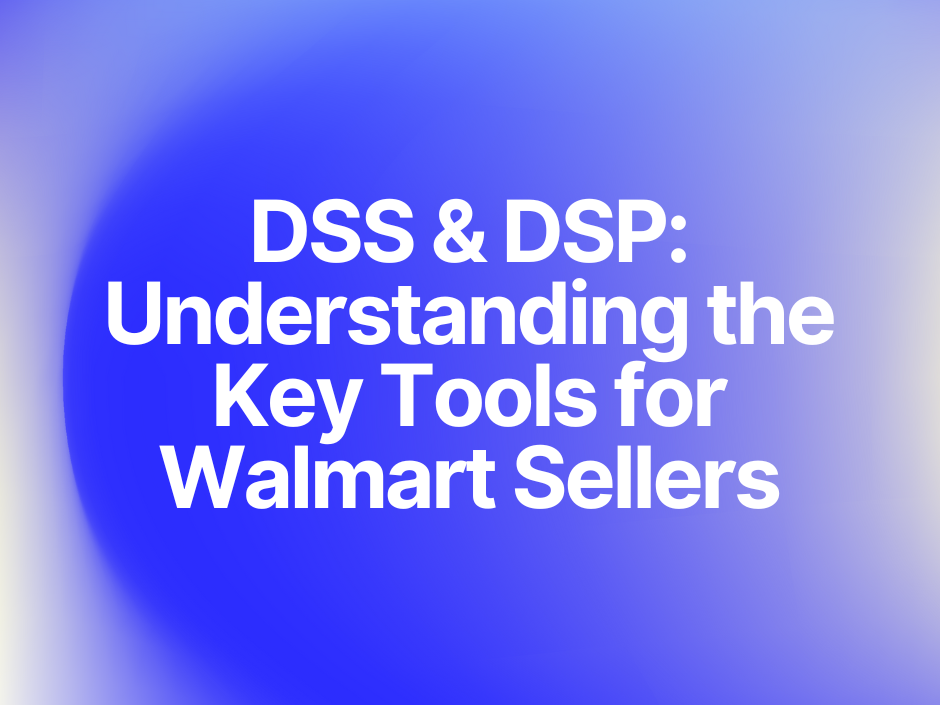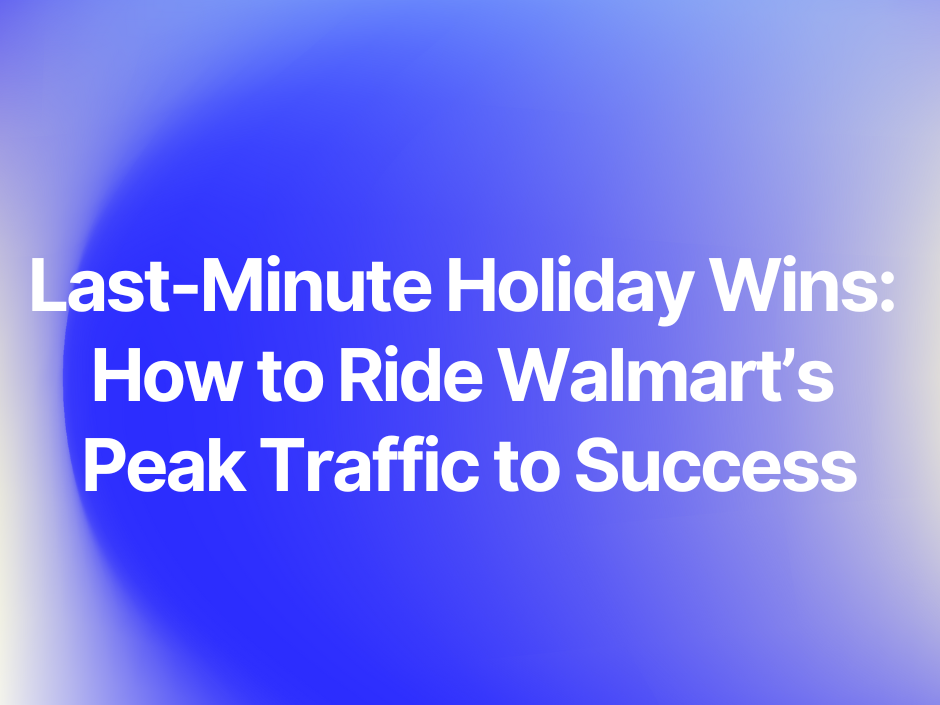Why Walmart DSS Is a Game-Changer
Walmart DSS (Display Self-Serve) & DSP (Demand-Side Platform) is built to help brands and sellers promote products beyond sponsored search. DSS ads appear across Walmart.com and the Walmart app, offering flexible, visually-rich placements that support both performance and brand awareness goals.
Sellers can use DSS to:
- Convert new customers who aren’t searching for their brand
- Re-engage shoppers who browsed but didn’t buy
- Complement Sponsored Search with top-of-funnel visibility
- Drive more sales by combining multiple ad touchpoints
According to Walmart Connect, brands that run Sponsored Search and Onsite Display campaigns together often see stronger results across ROAS, conversions, and average order value.
Make your Self-Serve ads as effective as possible - Walmart Connect Academy Ad Certification

Key Benefits of DSS for Marketplace Sellers
- Brand-Building at Scale: Show your product in lifestyle creatives across high-traffic Walmart pages.
- Audience Precision: Tap into Walmart’s first-party data, including purchase history and intent signals.
- Visual Impact: Go beyond keyword ads with creative banners, carousels, and personalized messages.
- Easy Optimization: Walmart provides real-time metrics, allowing constant performance adjustments.
Best Practices for Successful DSS Campaigns
To maximize your impact, sellers should:
- Use a broad product set (25–100 SKUs) to increase impressions and sales coverage
- Drive traffic to brand shelves or collection pages to maintain customer focus
- Leverage Walmart’s rich targeting capabilities, including past purchases and category behavior
- Test creative formats like carousel or lifestyle banners to find what resonates best
Walmart's DSS guide offers additional setup tips.
Understanding Walmart DSP (Demand-Side Platform)
While DSS focuses on onsite placements, Walmart’s DSP reaches customers off Walmart.com across thousands of websites and apps. Using Walmart’s customer data and advanced targeting, sellers can:
- Retarget abandoned shoppers
- Build awareness offsite
- Drive omnichannel traffic back to listings or stores
With DSP, ads can appear in:
- Mobile apps
- Third-party websites
- Streaming platforms
- Programmatic video and display networks
This omnichannel approach makes DSP a powerful complement to DSS, especially for brands looking to scale awareness and loyalty outside of the Walmart ecosystem.
👉 All About Walmart DSP
👉Walmart Connect Ad Certification in Walmart DSP

When to Use DSS vs. DSP

Understanding the Full-Funnel Ad Strategy on Walmart
Walmart sellers often focus on bottom-of-funnel tactics, such as Sponsored Search, but success comes faster when you target customers throughout their entire journey. That’s where DSP and DSS step in.
- Top of Funnel: DSP (Demand-Side Platform)
- Reach new audiences before they even start searching. DSP serves programmatic ads across third-party websites, mobile apps, and streaming platforms, perfect for brand awareness, retargeting, and driving off-site interest back to Walmart.
- Mid-Funnel: DSS (Display Self-Serve)
- Engage high-intent shoppers browsing Walmart.com or the app. DSS placements appear on category pages, item pages, and the homepage, allowing you to build familiarity and re-engage those who didn’t convert from search.
- Bottom of Funnel: Sponsored Search
- Target customers with high purchase intent directly in Walmart’s search results. Sponsored Products and Sponsored Brands help you close the sale at the decision-making stage.
Together, these ad types build a layered strategy, guiding customers from discovery to conversion across every touchpoint on and off Walmart.com.
Running Walmart ads isn’t just about bidding on keywords. DSS and DSP offer layered, full-funnel strategies that help sellers show up where it counts onsite, offsite, and everywhere customers are browsing.
Want expert help setting up DSS or DSP? Speak to an Expert




.png)
.png)